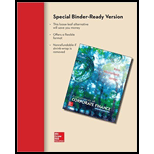
Fundamentals of Corporate Finance (Special Edition for Rutgers Business School)
11th Edition
ISBN: 9781308509853
Author: Ross, Westerfield, Jordan
Publisher: McGraw Hill
expand_more
expand_more
format_list_bulleted
Question
Chapter 26, Problem 2QP
Summary Introduction
To construct: The post-merger
Introduction:
A merger is the total absorption of one company by another, where the firm that is acquiring retains its uniqueness and it terminates the other to exist as an individual entity.
Expert Solution & Answer
Want to see the full answer?
Check out a sample textbook solution
Students have asked these similar questions
Need answer.
Solve plz now
Precious metal qn solve .
Chapter 26 Solutions
Fundamentals of Corporate Finance (Special Edition for Rutgers Business School)
Ch. 26.1 - Prob. 26.1ACQCh. 26.1 - Prob. 26.1BCQCh. 26.2 - Prob. 26.2ACQCh. 26.2 - Prob. 26.2BCQCh. 26.3 - Prob. 26.3ACQCh. 26.3 - Prob. 26.3BCQCh. 26.4 - Prob. 26.4ACQCh. 26.4 - Prob. 26.4BCQCh. 26.5 - Prob. 26.5ACQCh. 26.5 - Prob. 26.5BCQ
Ch. 26.6 - Prob. 26.6ACQCh. 26.6 - Prob. 26.6BCQCh. 26.7 - Prob. 26.7ACQCh. 26.7 - Prob. 26.7BCQCh. 26.8 - Prob. 26.8ACQCh. 26.8 - Prob. 26.8BCQCh. 26.9 - Prob. 26.9ACQCh. 26 - Prob. 26.3CTFCh. 26 - What factors should be considered when deciding...Ch. 26 - Prob. 1CRCTCh. 26 - Prob. 2CRCTCh. 26 - Prob. 3CRCTCh. 26 - Prob. 4CRCTCh. 26 - Prob. 5CRCTCh. 26 - Prob. 6CRCTCh. 26 - Prob. 7CRCTCh. 26 - Prob. 8CRCTCh. 26 - Prob. 9CRCTCh. 26 - Prob. 10CRCTCh. 26 - Prob. 1QPCh. 26 - Prob. 2QPCh. 26 - Prob. 3QPCh. 26 - Prob. 4QPCh. 26 - Prob. 5QPCh. 26 - Prob. 6QPCh. 26 - Prob. 7QPCh. 26 - Prob. 8QPCh. 26 - Cash versus Stock as Payment [LO3] In the previous...Ch. 26 - Prob. 10QPCh. 26 - Prob. 11QPCh. 26 - Prob. 12QPCh. 26 - Prob. 13QPCh. 26 - Prob. 14QPCh. 26 - Prob. 1MCh. 26 - Prob. 2MCh. 26 - Prob. 3MCh. 26 - Prob. 4M
Knowledge Booster
Similar questions
arrow_back_ios
SEE MORE QUESTIONS
arrow_forward_ios
Recommended textbooks for you
 EBK CONTEMPORARY FINANCIAL MANAGEMENTFinanceISBN:9781337514835Author:MOYERPublisher:CENGAGE LEARNING - CONSIGNMENT
EBK CONTEMPORARY FINANCIAL MANAGEMENTFinanceISBN:9781337514835Author:MOYERPublisher:CENGAGE LEARNING - CONSIGNMENT

EBK CONTEMPORARY FINANCIAL MANAGEMENT
Finance
ISBN:9781337514835
Author:MOYER
Publisher:CENGAGE LEARNING - CONSIGNMENT
